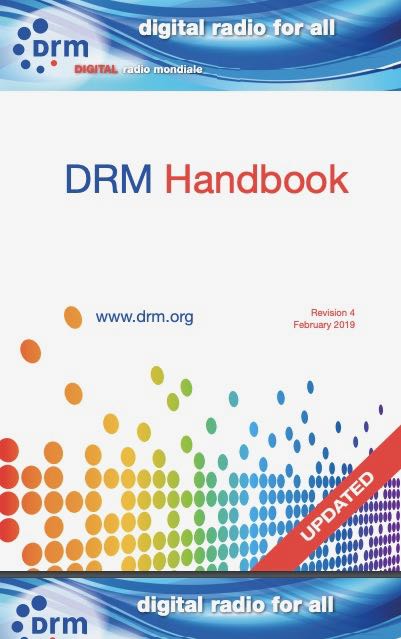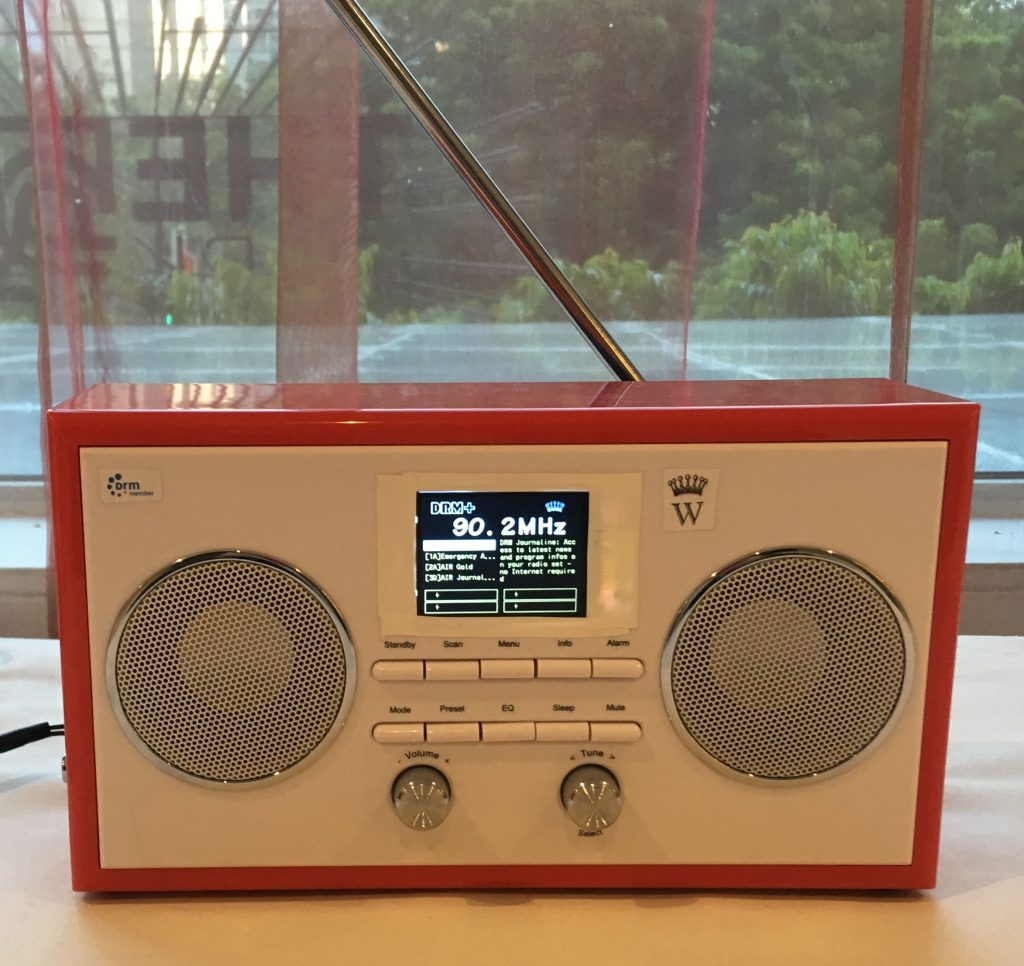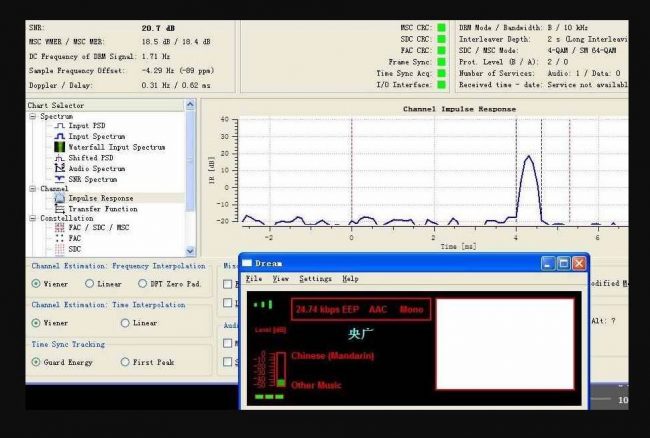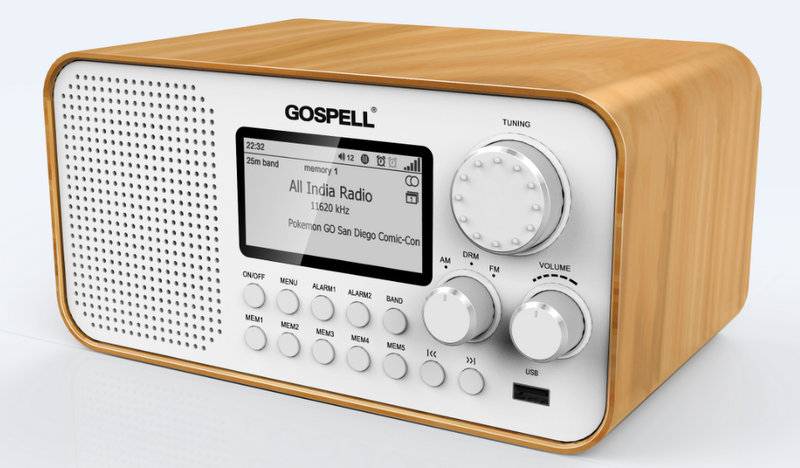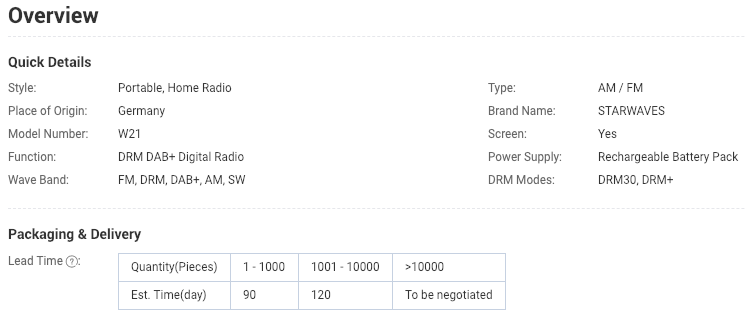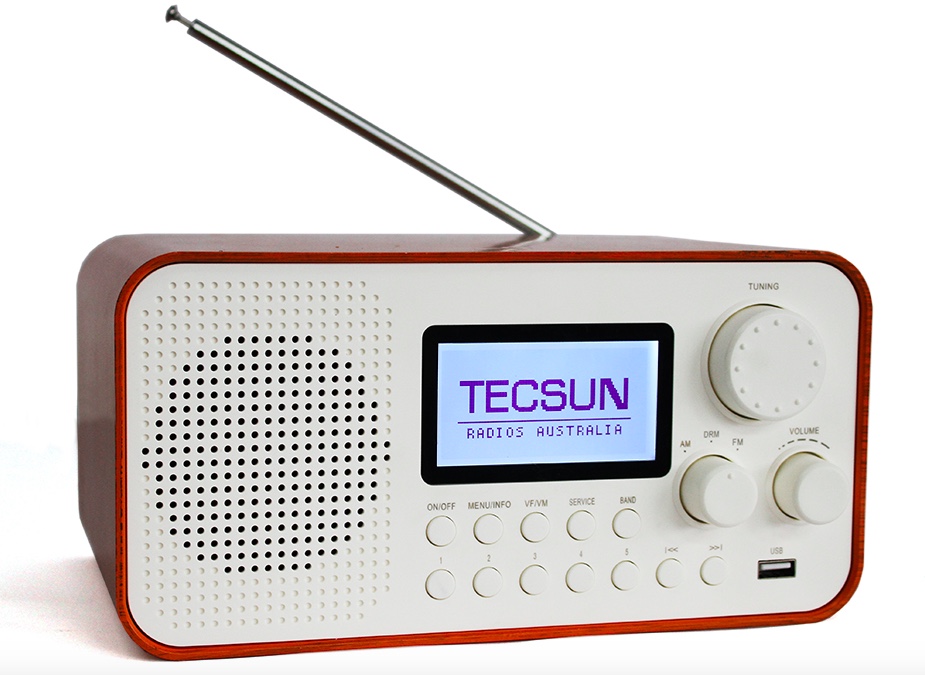Many thanks to SWLing Post contributor, Ed, who notes that the latest version of the DRM Handbook is available for download.
Tag Archives: DRM
Chairman of DRM Consortium looks at the current state of shortwave
(Source: Radio World via Maichael Black)
Note that the excerpt below is only a portion of the full article. Read the full piece at Radio World.
Does Shortwave Have a Future?
by RUXANDRA OBREJA
When is the last time you heard a shortwave radio transmission? And why should you put up with possible crackly audio and some interference when we have now internet, satellites, FM and all forms of digital radio?
[…]Shortwave is just short of a miracle, actually. When it is beamed at an angle, it hits the ionosphere. A mirror around the Earth and then it falls like a ball at great distances, beyond the horizon. Thus these transmissions reach listeners over large areas, continents and beyond. Two or three high-power transmitters can potentially cover the entire world.
Shortwave is used not just by international radio stations or radio amateurs but is also essential for aviation, marine, diplomatic and emergency purposes. Shortwave signals are not restricted or controlled by the receiving countries and, as frequencies change in winter and summer, they need to be coordinated internationally.
[…]Digital Radio Mondiale was originally invented to offer medium (AM) and large coverage (HF) and the advantages of the good audio quality and extra multimedia services that can take shortwave into the 21st century. Maybe DRM was ahead of its time. The phasing in of digital broadcasts internationally was not in tandem with the production and sale of receivers, which remains a regional and national business. Since its birth DRM has proven that it is a suitable option for shortwave offering an good digital quality of audio and even short live video at great distance without fading and crackly sound.
Now, at last, there are DRM receivers capable of receiving shortwave, there are broadcasts and interested broadcasters. Quietly and surely shortwave is being re-examined and appreciated for the quality of broadcasts and its potential as a “crisis radio” too. It can become crucial in emergencies when local and regional radio stations, satellite and internet may be off the air due to damage. Broadband is getting cheaper but is limited, 5G will come but not just yet, digital shortwave is here.[…]
Radio World: “China Makes Its DRM Move”
(Source: Radio World via Michael Bird)
The nation becomes world’s leading Digital Radio Mondiale shortwave broadcaster in just one year
Hans Johnson
BEIJING — It appears as if China has jumped into Digital Radio Mondiale shortwave broadcasting with both feet. Some DRM infrastructure has been in place for over a decade, but up until recently had only been sporadically tested.
Just over a year ago, China had no regular DRM presence. Today, it is the world’s largest DRM shortwave broadcaster. China operates the most DRM transmitters in this band and has the most extensive schedule.
The initial broadcasts started in early 2018 from Beijing. Services continued to rollout over the year via various transmitter sites, often on the country’s periphery.
A DRM shortwave transmitter in Beijing targets north China almost 24 hours a day. A second Beijing transmitter targets east China for eight hours a day.
Another transmitter in Ürümqi in the country’s west targets central and east China for 14 hours a day, while a transmitter in Qiqihar, Heilongjiang province (the Manchurian plain), is on more than 11 hours a day and reaches south and southwest China. Dongfang on Hainan Island province is on eight hours a day on two frequencies for both north and southeast China. Finally, the DRM shortwave transmitter located in Kunming in the Yunnan province is on eight hours daily for south China. There is now a DRM network providing nationwide coverage.
By comparison All India Radio has 11.5 hours a day of shortwave time coming from a single transmitter. The Indian broadcaster has as many as three more DRM-capable shortwave transmitters but they are not on air at present. India does operate 38 AM (medium wave) transmitters for its domestic network, however.[…]
Click here to continue reading the full article at Radio World.
India, DRM, and FM white spaces
(Source: Broadcast and Cable Sat)
Digital Radio Receivers – Availability At An Affordable Price
by Yogender Pal (Chairman, DRM India Chapter)
[…]Transmissions in FM band in India, by AIR as well as private broadcasters, are still in analogue mode only. Aware of the advantages of digital radio broadcasting, the Telecom Regulatory Authority of India, the regulator for all the broadcast services too, has recommended to allow private broadcasters to broadcast in the digital white spaces available in the FM band (VHF band II). This recommendation is under consideration of the Ministry of Information and Broadcasting. The Ministry held a meeting on the issue on August 30, 2018. All stakeholders (public and private) were in favor of digital broadcasting in FM band and suggested that the ministry makes public a regulatory policy as soon as possible. Cellphone manufacturers also gave their support provided no additional costs were involved.
A digital receiver is required to receive digital radio broadcasts as analogue receivers cannot decode the digital signals.
One of the welcome features of the current roll-out of DRM digital radio in India has been the early and overwhelming commitment of the car industry. Most of the leading car manufacturers in India have either already incorporated DRM receivers in their cars or are in the process of incorporating them. Hyundai has built-in DRM radios in all its models except one. Maruti Suzuki has also incorporated DRM receivers in 6 models and all their models are soon expected to have built-in DRM receivers. Mahindra has also installed DRM in its TUV model. It is encouraging that the roll-out of DRM equipped cars is growing rapidly. At present the number is understood to have surpassed the 10 lakh mark. Indian car manufacturers are not charging extra from consumers for line-fit DRM radio sets.
In parallel, efforts are being made by a large number of Indian and foreign receiver manufacturers to provide standalone DRM receivers. Communications Systems is the first Indian radio manufacturer to domestically develop and produce a DRM receiver (AV-1401). Inntot Technologies, a young start-up enterprise, has developed a software-based DRM receiver based on a generic processor. This is likely to be much cheaper. GeekSynergy, another start-up company, is also working on the development of a highly affordable DRM receiver.
Gospell Digital Technology located in China has presented a very well-reviewed DRM Receiver, GR216, which is already in production. Gospell is developing a DRM receiver dongle, GR-227 too, which can be plugged in the existing audio systems in the automobiles on USB ports or Aux input to receive DRM digital signals. Titus SDR, a Panamanian based company, has developed a multi-standard and software-based digital radio receiver. Starwaves has also developed a prototype DRM receiver.
Standalone DRM digital efforts remain relatively expensive at present. Like with any new technology higher volumes will bring down the cost of the receivers. AIR may thus offer content with additional audio services, innovative advanced features such as journaline advanced text, emergency warnings, and traffic information so that listeners see value in buying a digital receiver.
An app for DRM digital reception in mobile phones in FM band has been already developed. Demonstrations have been made on the reception of DRM digital signals in the existing mobile phones by plugging a dongle. External dongle would not be required in the new mobile phones; however, the industry wants to see the publicized policy of the government before making the necessary adjustments for working of the app.
Most of the standalone receivers can receive DRM (in addition to analogue) in AM bands; and its software can also be upgraded to receive DRM in FM band. As announced by Director General recently, AIR may start digital radio broadcasting in FM band. Government may also accept TRAI recommendations and announce a roadmap for digital radio broadcasting in FM band by private broadcasters so that the industry (cellphones, automobile, and standalone receiver manufacturers) gets confidence and starts mass production of receivers.[…]
Read the full article at Broadcast and Cable Sat online.
Many thanks to Ed for the tip!
A new portable DRM/DAB receiver by Starwaves GmbH
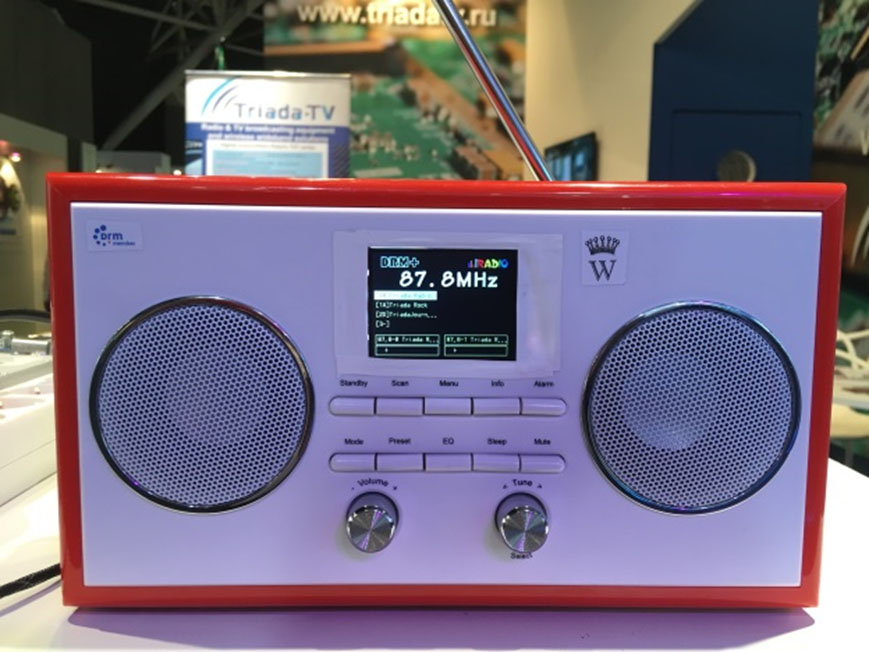 Many thanks to SWLing Post contributor, Mangosman, who notes:
Many thanks to SWLing Post contributor, Mangosman, who notes:
There is a new digital receiver available. It can receive DRM in all bands from low, medium, high and band 1 & 2 VHF, as well as DAB+ and analog AM and FM.
It cannot receive HD radio because Xpedia charge licensing fees on every receiver and the market is restricted to USA and Mexico.
https://www.alibaba.com/product-detail/DRM-DAB-Digital-Radio-Receiver_11547499.html
Thank you for the tip! It appears this receiver is a product of STARWAVES GmbH, Germany/Switzerland, although I assume it’s manufactured in China based on the bulk order costs.
I’ve reached out to the manufacturer for more details as there are few specifics and no specifications on the Alibaba page.
There are also no details about this radio on the Starwaves website.
If/when we receive more information about this radio, we’ll share it here on the SWLing Post. Stay tuned!
Do you enjoy the SWLing Post?
Please consider supporting us via Patreon or our Coffee Fund!
Your support makes articles like this one possible. Thank you!
Stefano invites you to experiment with DRM (Digital Radio Mondiale) over IP
Many thanks to SWLing Post contributor, Stefano Mollo (VK6WFM), who writes:
I have been lately experimenting with DRM 30, with the aim of coming up with a cheap solution to get on air for next to no $$$, for small, local broadcasters that would either go pirate on FM or would not go at all due to the impossibility here in Australia to get a proper FM license at a cost that does not involves selling a kidney (or two)!
I am a ham radio operator, so I turned my attention to DRM30; [the DRM application] DReaM has the capability of acting as a transmitter as well, so I started experimenting.
Click here to download DReaM via SourceForge.
I was very successful at transmitting a DRM30 / 10 kHz signal with a $ 0.50 TX module otherwise intended to transmit data with an Arduino. The signal was received with an SDR + HDSDR + Virtual Audio Cable + DReaM in reception mode.
So far, so good; with this experiment I realised that DRM 30 can, in fact, yield excellent quality at ANY frequency (as I used the 433Mhz LIPD range in my experiment) or better said, with any medium, as long as it is linear enough to transport the DRM signal.
I wanted to find a way to show the World – literally – what can be achieved with DReaM in TX mode…for free!!!
So, after some trial and error, I have set up the system below which allows anyone in the World to “tune in” my “DRM30 radio station” and listen to my DRM30/18 kHz signal, in full blown stereo. Quality is exceptional, and just imagine to send DReaM’s signal to a proper transmitter instead of streaming it over the internet ….
So…point your VLC Media Player (on Windows) to stream from:
…then pipe VLC’s output to DReaM’s input via Audio Cable (or any other Virtual Audio Cable you like).
In DReaM, select the audio cable output as the sound card’s signal input device:
Set the sample rate to the highest value:
One more thing you need to set is the “Channel Estimation: Time Interpolation” parameter to Linear; this is very important!
After few seconds you should be able my test signal, in full stereo, streamed from a PC running DReaM in TX mode, whose output is then captured by MB Recaster and streamed to an ICE Cast server I have in the Cloud. Note that no particular configuration was needed on the ICE Cast server, at all.
This is an example of what can be achieved on a solid transmission channel with DRM30 and only 18 kHz bandwidth (i.e. the normal bandwidth of an AM channel).
One can achieve the same exact audio quality using any channel linear enough to transport an 18 kHz wide DRM30 signal. It doesn’t matter the frequency, or the physical medium per se.
[…]My aim with this experiment is not to send DRM over IP; there are much simpler ways or streaming audio over IP.
Rather, my aim is to demonstrate what can be achieved with 18 kHz +DRM30 on any frequency and on any medium (which, could be for example the electrical distribution overhead lines …. just saying …. 🙂 ).
If only the local regulator would support this, instead of enforcing draconian regulations … such as the restriction of just 6 kHz on shortwave.
Please share your thoughts.
Fascinating experiment, Stefano! Thanks for sharing!
Post readers: If you’re in the mood to do a little experiment, let us know if you’re able to decode Stefano’s 18 kHz DRM30 broadcast over IP! Please comment!
The “Tecsun Radios Australia Q-3061” DRM Shortwave Radio
Many thanks to SWLing Post contributor, Alan Hughes, who notes that Tecsun Radios Australia have announced a new DRM stand-alone receiver: the Q-3061.
When I first received Alan’s tip, I was surprised that I had not been been given some advance notice or even a hint about Tecsun developing and producing a DRM radio. Then I saw the Q-3061 product image and it looked to be a spitting image of the Gospell GR-216 DRM radio. A quick look at the radio’s back panel and the connection with the GR-216 was confirmed.
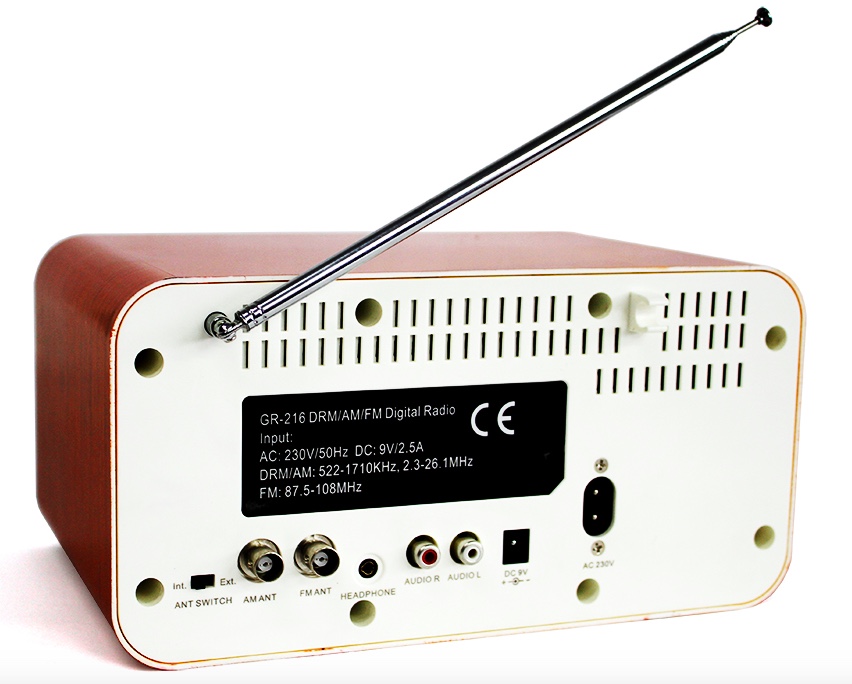 Reading through the product description, it appears they worked with Gospell to badge this for Tecsun Radios Australia’s primary markets:
Reading through the product description, it appears they worked with Gospell to badge this for Tecsun Radios Australia’s primary markets:
“The Tecsun Radios Australia Q-3061 DRM Shortwave Radio is for experienced shortwave users. There a limited number of DRM signals available in our region although the total number of DRM broadcasts are increasing. This radio is squarely aimed at radio enthusiasts and DXers, most signals require an external antenna, experience, and patience. We recommend our Tecsun Radios Australia Q-3061 DRM Shortwave Radio be used in conjunction with our Tecsun Shortwave and AM Outdoor Antenna for the best results (this is the setup we have in our Brookvale NSW office).
The Tecsun Radios Australia Q-3061 DRM Shortwave Radio is the culmination of several years work. Tecsun Radios Australia has worked in close co-operation with the manufacturer providing testing results from locations across the Pacific, including Samoa, Vanuatu, Solomon Islands, Fiji, and New Zealand. Reception of DRM signals in Australia requires many factors to be optimised, because we are outside the traditional coverage area of most broadcasters. Nevertheless, with an optimised antenna, correct selection of DRM broadcaster, schedule and good propagation conditions DRM signals can be received. New DRM broadcasters are appearing every month.”
After the product description they also include this disclaimer:
Note: This DRM radio has no association with Tecsun of China and is an exclusive initiative and product of Tecsun Radios Australia
The price is $500 AU or approximately $357 US.
To recap, this isn’t a new Tecsun DRM radio, rather it’s a rebadged GR-216 for the retailer/distributor Tecsun Radios Australia.
Click here to read about the Q-3061 at Tecsun Radios Australia.
Click here to read a review of the Gospell GR-216 DRM receiver.
Do you enjoy the SWLing Post?
Please consider supporting us via Patreon or our Coffee Fund!
Your support makes articles like this one possible. Thank you!

